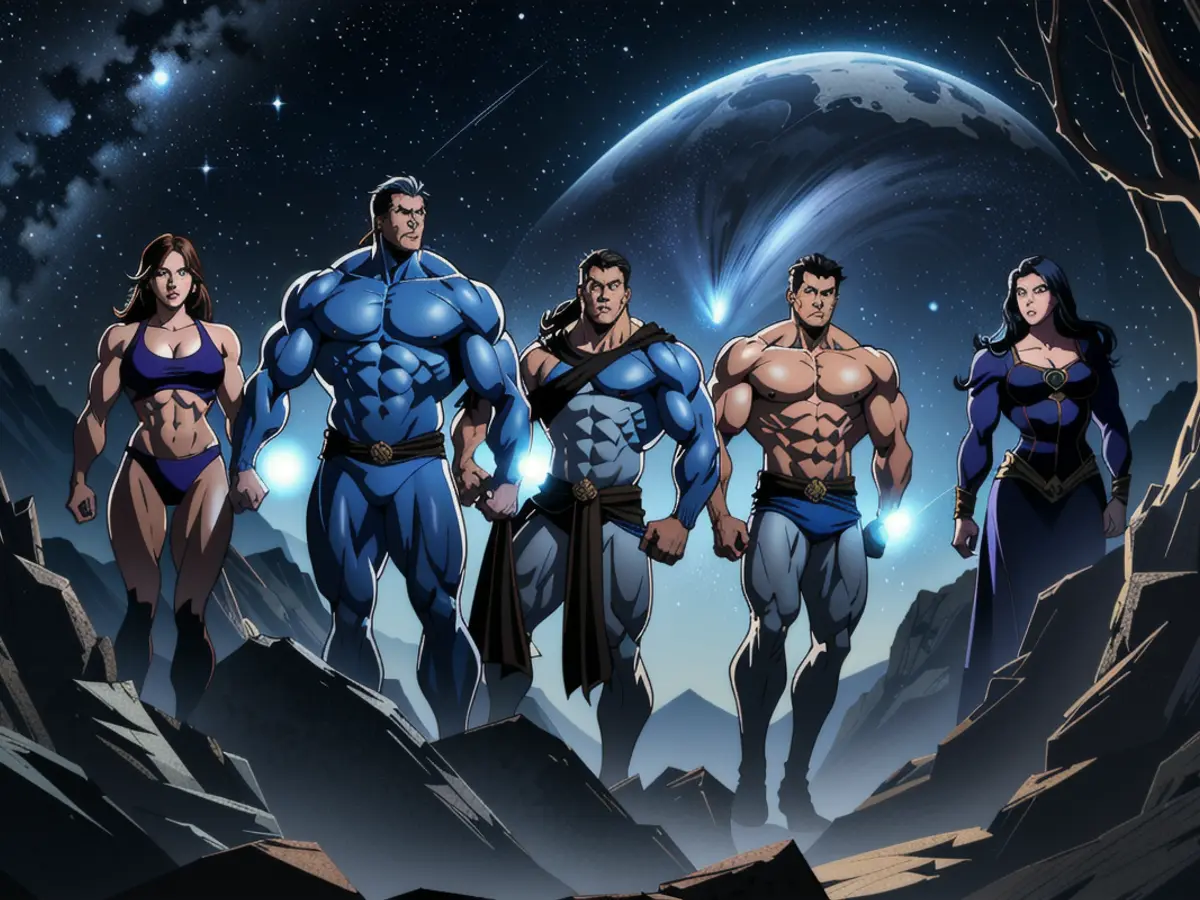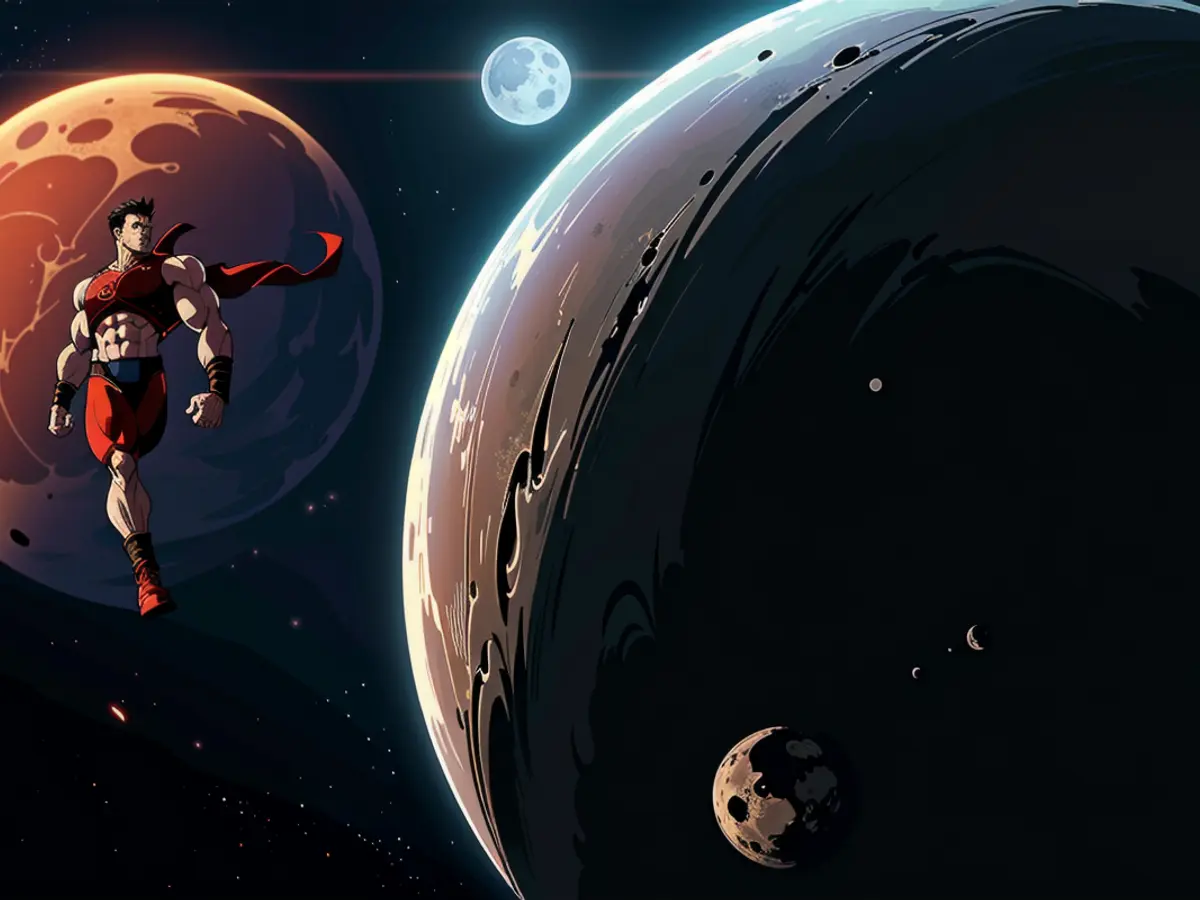January's Celestial Display: Witness the Complete Lunar Eclipse of Mars by the 'Wolf Moon'
In 2025, sky-gazers have plenty to look forward to, including the largest supermoon in years. But why wait? Here are some of the year's best celestial delights to get started:
January kicks off with an impressive meteor shower — the last one until April — and the moon passing in front of the Pleiades, a half-lit Venus, and an extraordinary total eclipse of a bright Mars by the moon.
Here's what you need to know about stargazing, moon-watching, and the night sky in January 2025:
1. A Largely forgotten Meteor Shower
When: shortly after sunset on Friday, Jan. 3, 2025
Where: all-sky
The Quadrantids aren't popular among meteor shower enthusiasts, but they can produce around 120 "shooting stars" per hour at their peak. This happens on Jan. 3. The Quadrantids are also known for their brilliant fireball meteors, which can appear anywhere in the night sky. This year, it should be quite a show, but the peak will be lasting as night falls in North America, so start looking as soon as it gets dark. A crescent moon shouldn't obstruct too much.
2. The Moon Crosses The ‘Seven Sisters’
When: an hour after sunset on Thursday, Jan. 9, 2025

Where: east
The Pleiades is among the most stunning sights in the night sky. This group of seven bright stars (also known as the "Seven Sisters") is close to the sun's path — the ecliptic — and where you'll also find the moon. Occasionally, the moon covers up (or occults) the Pleiades. Looking high to the east when it gets dark, you'll see an 81%-lit waxing gibbous moon moving across the Pleiades over three or four hours. Use binoculars.
3. A Half-lit Venus
When: 30 minutes after sunset on Saturday, Jan. 11, 2025
Where: southwest
Planets have phases, but only two do. If you've ever wanted to see Venus half-lit — and slightly resembling the moon — put a small telescope on it after sunset today. It's in its half-lit phase — its dichotomy — because it's an inner planet, and it never appears full from our perspective because it never gets the sun's full glare. It's so close and bright that only those with telescopes can see its phases.
4. The Moon Covers Mars
When: a few hours after sunset on Monday, Jan. 13-Tuesday, Jan. 14, 2025

Where: southern sky
One of the highlights of 2025: the bright planet Mars was eclipsed for a few hours by a near-full "Wolf Moon." This event will take place between 8:44 p.m. EST on Monday, Jan. 13, and 00:52 a.m. EST on Tuesday, Jan. 14, with precise timing depending on your location. Check In-the-sky.org and its helpful map and timings for more details.
5. A Full ‘Wolf Moon’ Rises
When: moonrise where you are during dusk on Tuesday, Jan. 14, 2025
Where: east
The day after a significant astronomical event (see above) comes the rising of January’s full moon, the “Wolf Moon.” For a good view of the eastern horizon, watch it appear just after the sun has set in the west.
6. Mars At Its Biggest, Brightest, and Best
When: after sunset on Wednesday, Jan. 15, 2025

Where: east
At its once-in-26-months opposition, Mars is a breathtaking sight to the naked eye or through a telescope. At its biggest, brightest, and best, the visibly red planet will rise in the east during dusk and set in the west during dawn. The planet will look its best this week and next but remain visible in the night sky until the end of November.
7. Venus And Saturn in Conjunction
When: just after sunset on Saturday, Jan. 18, 2025
Where: west
The sight of two planets seemingly close to each other in the night sky is beautiful — but the attentive should watch this event over several weeks, during which Venus and Saturn will inch closer each night before the big night, then drift away. It's a convenient post-sunset sight low in the western sky.
The times and dates given apply to mid-northern latitudes. For the most accurate location-specific information, consult online planetariums like Stellarium.
Wishing you clear skies and wide eyes.
By continuing your celestial exploration in January 2025, you'll also witness Venus and Saturn in conjunction. This captivating sight can be observed just after sunset on Saturday, January 18, 2025, in the western sky. As the day ends, the two planets will appear close together, providing a stunning visual treat for stargazers. Keep your eyes peeled as they draw closer over several weeks before gradually drifting apart again.






